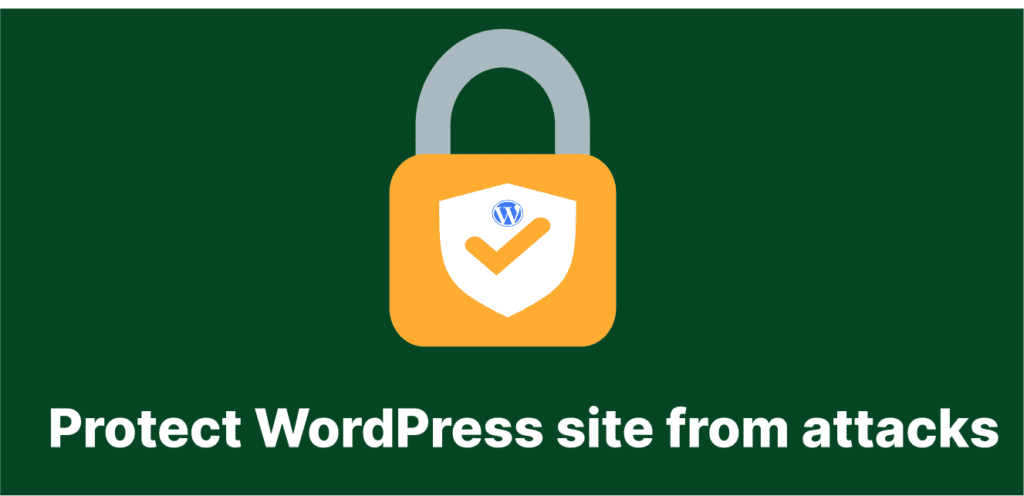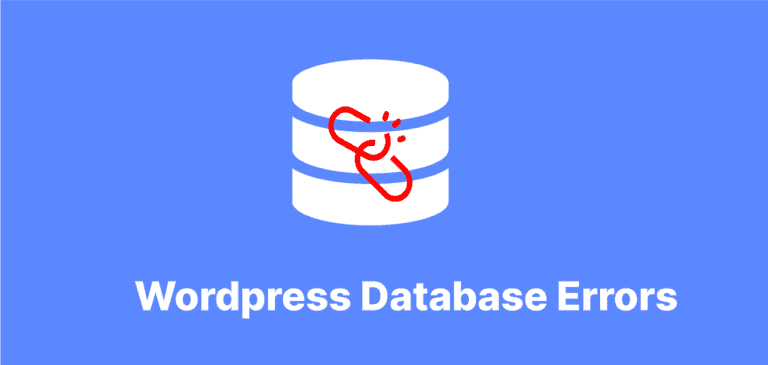Did you know that over 30,000 WordPress websites get hacked every day? According to Wordfence Security Report. Even more alarming, 70% of WordPress installations are vulnerable to known security exploits right now.
If you’re running a WordPress site without proper security measures, you’re essentially leaving your front door wide open with a “Come on in!” sign for hackers. The consequences can be devastating: stolen customer data, malware distribution, SEO penalties, and permanent damage to your reputation.
This comprehensive guide will walk you through 12 essential WordPress security measures that can protect your site from the most common threats. These aren’t theoretical suggestions—they’re battle-tested tactics used by WordPress security experts to shield thousands of websites from attacks.
Table of Contents:
- Why WordPress Security Matters: Prime Targets for Hackers in 2025
- 1. Implement a Web Application Firewall (WAF)
- 2. Use Strong Authentication Practices
- 3. Keep WordPress Core, Themes, and Plugins Updated
- 4. Use a Secure WordPress Hosting Provider
- 5. Implement Regular Automated Backups
- 6. Harden Your WordPress Installation
- 7. Use SSL/TLS Encryption (HTTPS)
- 8. Implement Security Headers
- 9. Set Up File Integrity Monitoring
- 10. Conduct Regular Security Scans
- 11. Protect Against Content Scraping and Hotlinking
- 12. Create a Security Response Plan
- WordPress Security Checklist
- The Bottom Line: Comprehensive WordPress Security Requires Vigilance
Why WordPress Security Matters: Prime Targets for Hackers in 2025
WordPress powers over 43% of all websites online, making it a prime target for hackers. Here’s why attacks continue to increase:
- WordPress’s open-source nature means vulnerabilities are publicly documented
- Many site owners neglect regular updates
- The massive plugin ecosystem creates numerous potential security gaps
- Automated bots constantly scan for known vulnerabilities
Let’s secure your WordPress site with these proven protection measures.
1. Implement a Web Application Firewall (WAF)
A Web Application Firewall acts as your site’s security guard, filtering out malicious traffic before it reaches your WordPress installation.
Why it’s essential: A good WAF blocks 99.9% of automated attacks, stopping hackers before they even reach your WordPress login page.
Implementation options:
- Cloudflare (Free and premium plans)
- Sucuri Website Firewall (Premium protection)
- Wordfence (WordPress-specific solution)
Key features to look for:
- IP blocking capabilities
- Country-based restrictions
- Bot protection
- Virtual patching for WordPress vulnerabilities
2. Use Strong Authentication Practices
The WordPress login page is the most frequently attacked entry point. Strengthening your authentication is critically important for WordPress security.
Essential authentication measures:
Two-Factor Authentication (2FA)
Require a second verification method beyond just a password. This single step reduces successful breaches by over 99%.
Best 2FA plugins:
Strong Password Enforcement
Require all users to use complex passwords of at least 12 characters.
Password security plugins:
Limited Login Attempts
Block IP addresses after multiple failed login attempts.
Recommended plugins:
3. Keep WordPress Core, Themes, and Plugins Updated
Outdated software is responsible for 56% of all WordPress infections. Updates often include critical security patches.
Best practices for updates:
- Enable automatic background updates for minor WordPress releases
- Create a staging environment to test major updates
- Set a regular schedule for reviewing and updating plugins
- Remove any plugins or themes that are no longer maintained
Update management tools:
A proactive WordPress security approach always includes a rigorous update schedule.
4. Use a Secure WordPress Hosting Provider
Your hosting provider forms the foundation of your WordPress security posture.
Security features to look for in WordPress hosting:
- Server-level firewalls
- Malware scanning and removal
- Automatic WordPress updates
- Regular security patching
- Account isolation (especially on shared hosting)
- DDoS protection
Most secure WordPress hosting providers:
A robust WordPress security strategy always includes choosing the right host. Learn more about selecting secure WordPress hosting options.
5. Implement Regular Automated Backups
When all else fails, backups ensure you can quickly recover from any security incident.
Backup best practices:
- Store backups in multiple locations (not just on your server)
- Encrypt backup files containing sensitive information
- Test restoration procedures regularly
- Maintain at least 30 days of daily backups
Reliable backup solutions:
- UpdraftPlus
- BackupBuddy
- JetBackup (server-level solution)
- BlogVault
For a complete strategy, check our WordPress backup strategy guide.
6. Harden Your WordPress Installation
WordPress hardening involves changing default settings and applying additional security measures to reduce your attack surface.
Critical WordPress Security Hardening Steps:
Change Database Prefix
The default “wp_” prefix makes it easier for attackers to target your database tables.
Disable File Editing in the Dashboard
Add this to wp-config.php:
define('DISALLOW_FILE_EDIT', true);
Hide WordPress Version Information
Remove version disclosure, which helps attackers identify vulnerable installations.
Secure wp-config.php
Move this critical file above your web root or add .htaccess protection.
Implement Proper File Permissions
Set correct CHMOD values:
- Directories: 755
- Files: 644
- wp-config.php: 600
7. Use SSL/TLS Encryption (HTTPS)
HTTPS is no longer optional—it’s essential for both security and SEO.
Benefits of SSL/TLS:
- Encrypts data transmission between servers and browsers
- Prevents man-in-the-middle attacks
- Builds visitor trust with the padlock icon
- Provides an SEO ranking boost
Implementation options:
- Let’s Encrypt (free certificates)
- Hosting provider SSL (often included free)
- Commercial SSL certificates for extended validation
After installation, use Really Simple SSL plugin to ensure proper implementation across your entire site.
WordPress security experts unanimously recommend SSL as a fundamental protection layer.
8. Implement Security Headers
HTTP security headers provide another layer of protection against various attacks.
Essential security headers:
- Content-Security-Policy (CSP)
- X-XSS-Protection
- X-Frame-Options
- X-Content-Type-Options
- Referrer-Policy
- Strict-Transport-Security (HSTS)
Implementation options:
- Security Headers plugin
- Manually add to .htaccess
- Implement via Cloudflare
For more information on optimizing performance alongside security, visit our WordPress speed optimization guide.
9. Set Up File Integrity Monitoring
When hackers compromise a site, they often modify core WordPress files. File integrity monitoring alerts you when critical files change.
What to monitor:
- WordPress core files
- Theme files
- Plugin files
- Upload directory for suspicious files
Monitoring solutions:
Implementing file integrity monitoring significantly strengthens your WordPress security posture.
10. Conduct Regular Security Scans
Proactive scanning helps identify vulnerabilities before attackers exploit them.
Types of security scans:
- Malware detection
- Vulnerability assessment
- Blacklist monitoring
- File change detection
Recommended scanning tools:
- Sucuri SiteCheck (free online scanner)
- Wordfence Security Scanner
- MalCare Security Scanner
- Google Search Console Security Issues report
11. Protect Against Content Scraping and Hotlinking
Content theft and hotlinking can increase server load and bandwidth costs while harming your SEO efforts.
Protection measures:
- Disable directory browsing
- Implement proper hotlink protection
- Use CAPTCHA for forms
- Consider content delivery networks (CDNs)
Implementation code for hotlink protection (.htaccess):
RewriteEngine on
RewriteCond %{HTTP_REFERER} !^$
RewriteCond %{HTTP_REFERER} !^http(s)?://(www\.)?yourdomain.com [NC]
RewriteRule \.(jpg|jpeg|png|gif)$ - [NC,F,L]
Content protection is often overlooked in WordPress security planning, but remains essential.
12. Create a Security Response Plan
Even with the best protections, security incidents can still occur. Having a plan reduces damage and recovery time.
Your security response plan should include:
- Detection procedures
- Containment strategies
- Eradication methods
- Recovery processes
- Communication templates for affected users
- Post-incident analysis protocols
Tools to assist with incident response:
- Sucuri’s incident response service
- Wordfence site cleaning
- WP Reset for last-resort recovery
WordPress Security Tools Worth Investing In
For serious website owners, these premium WordPress security tools provide comprehensive protection:
- Sucuri Security Platform – Complete protection including WAF, monitoring, and cleanup
- Wordfence Premium – Advanced firewall rules and real-time IP blacklists
- iThemes Security Pro – Comprehensive WordPress-specific security suite
- MalCare – Automated malware scanning and cleaning
WordPress Security Best Practices for Different Site Types
E-commerce Sites
- PCI compliance requirements
- Customer data protection
- Transaction security
- Fraud prevention
Membership Sites
- User permission hardening
- Password policies
- Account lockout protection
- Secure registration processes
High-Traffic Blogs
- DDoS protection
- Comment spam prevention
- Content protection
- Scalable security solutions
WordPress Security Checklist: Quick Reference
Use this checklist for a quick security audit of your WordPress site:
- [ ] Web Application Firewall implemented
- [ ] Two-factor authentication enabled
- [ ] Strong password policy enforced
- [ ] Limited login attempts configured
- [ ] All software updated to latest versions
- [ ] Secure hosting configured properly
- [ ] Automated backup system in place
- [ ] WordPress installation hardened
- [ ] SSL/TLS properly implemented
- [ ] Security headers configured
- [ ] File integrity monitoring active
- [ ] Regular security scans scheduled
- [ ] Content protection measures in place
- [ ] Security response plan documented
Frequently Asked Questions About WordPress Security
Q: How much does proper WordPress security cost?
A: Basic WordPress security can be implemented for free using plugins like Wordfence Free and free SSL certificates. Premium protection typically costs between $50-$300 per year depending on your needs.
Q: Can a WordPress site ever be 100% secure?
A: No website can be 100% secure, but implementing these 12 measures creates multiple security layers that make your site significantly harder to compromise than most targets.
Q: How do I know if my WordPress site has been hacked?
A: Signs include unexpected site behavior, unknown admin users, strange code in files, Google blacklist warnings, and unusual server resource usage.
Q: Should I hire a WordPress security expert?
A: For business-critical websites, e-commerce stores, or sites handling sensitive data, professional security setup is highly recommended.
The Bottom Line: Comprehensive WordPress Security Requires Vigilance
WordPress security isn’t something you set and forget—it requires ongoing attention and regular maintenance. By implementing these 12 essential protection measures, you’ll create multiple layers of security that significantly reduce your risk of compromise.
Remember: The cost of prevention is always lower than the cost of recovery after a hack.
Have you experienced a WordPress security breach? What measures have you found most effective? Share your experiences in the comments below.




